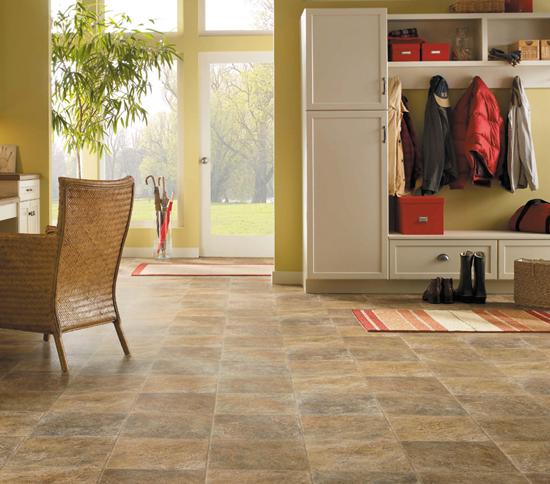The Resurgence of Resilient - January 2009
By Santo Torcivia
Up until the mid 1990s and the introduction of laminate flooring, resilient flooring was a staple floorcovering for wet areas of homes and businesses. With resilient used in nearly half of the kitchen and bathroom installations each year, it was solidly established in homes and in the healthcare, education, retail, and institutional commercial segments. However, as laminate flooring became more popular with consumers, resilient flooring shrank in its residential usage. This trend continued until 2007.
But resilient is making a comeback. In 2007 and late into 2008, resilient flooring sales declined the least among all flooring categories.
This resurgence of resilient flooring is due to several factors.
Pricing. Resilient flooring continues to be the lowest priced flooring. Due to the upheaval in the U.S. economy, households are increasingly opting for resilient floors. Although homeowners have traded down to resilient sheet or tile, they’ve gotten a quality floorcovering with excellent maintenance and spill handling qualities, along with an attractive and value-oriented floor. With more than half of all laminate flooring imported, laminate is much more susceptible to shipping cost increases, the result of high energy prices. It is estimated that transportation costs account for about one third of the total import value of laminate flooring.
Value & Function. Resilient flooring has never lost its value for the price. It has also always been a very functional product, especially in wet areas like kitchens, bathrooms, foyers and entry ways in residences. It works well commercially in places like hospitals and laboratories, schools, and retail establishments. No product can match its ability to handle wet or dry spills and its ability to support sanitary environments, combined with its ease of maintenance.
Product Enhancement. During the mid 1990s, as resilient sheet and tile declined in marketshare, manufacturers invested in new designs to improve product attractiveness. Further, luxury vinyl tile (LVT) was re-introduced and enhanced (by Congoleum, Durastone, and others) and lately LVT has expanded its offering of wood plank looks, some with snap type installation systems (such as Mannington’s Adura Loc-N-Go and Metroflor’s Konnecto). Also, new fiberglass-backed resilient sheet flooring can be installed without adhesive, making it very attractive for do-it-yourself (DIY) projects, just as resilient tile has always been preferred by DIY households due to its simplified installation methods. DIY projects further lower the final price of resilient flooring by cutting out the cost of installation.
Also, we can‘t forget the improvements made to linoleum over the years. Although linoleum has been around for many decades, its color, design, durability and maintenance characteristics have been enhanced over the years.
Brand Recognition. Many of these brands are among the nation’s most recognized, including Armstrong, Congoleum, and Mannington. Although in recent years these companies haven’t invested in advertising to support their resilient brands, consumers are aware of them from past advertising and have willingly purchased their products. One exception, however, is Forbo. According to Competitive Media Reporting, from 2005-2007, Forbo invested $2.3 million in consumer advertising to promote its Marmoleum linoleum product to U.S. consumers.
Market Segmentation. A significant portion of resilient flooring is sold into the commercial market, which has been strong of late, with just under half of all resilient sheet and tile sold for commercial installation in 2008. Carpet and ceramic tile also have about 40% of their annual sales in the commercial market and they, too, have benefited from a strong commercial market. Conversely, the commercial market accounted for only 9% of laminate flooring sales and 11% of wood flooring total sales in 2008.
Resilient flooring has turned the corner at last. Laminate flooring seems to have reached its equilibrium point with U.S. consumers—partly, perhaps, because of its characteristic sound—and from now on won’t gain swaths of marketshare by expanding geographically or into new channels. Laminate will now have to fight for share one sale at a time, the same as all other products. Given resilient flooring’s low price, new attractive looks, improved installation systems, and brand recognition, it should continue to rebound for years. In any case, 2009 looks like it will be another tough year for the U.S. economy, and that means resilient flooring should have another relatively good year.
Copyright 2009 Floor Focus
Related Topics:Lumber Liquidators, Armstrong Flooring, HMTX, Metroflor Luxury Vinyl Tile, Mannington Mills
